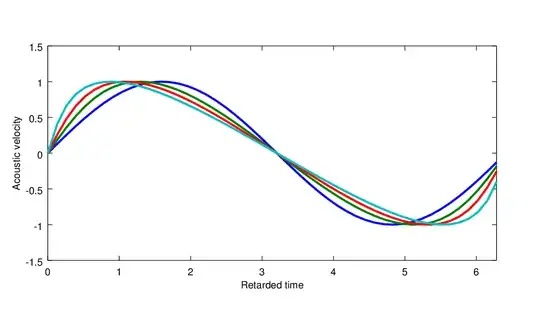I am studying Hamilton's & Blackstock's Nonlinear Acoustics. One of the essential phenomena associated with a finite-amplitude (unidimensional, planar) sound propagation is building the shock due to the super- and subsonic propagation speeds at different phases. The sound propagation speed is:
$$ c(t)=c_0+\beta u(t) $$
where $c_0$, $\beta$, $u$ denote adiabatic sound speed, coefficient of nonlinearity and acoustic velocity respectively.
Distorted waveform is usually depicted in retarded time at various positions (from undisturbed blue to teal):
I don't fully comprehend why the positive (and therefore quicker) parts appear to be retarding and eventually making a N-like sawtooth wave? I would guess the mirror image of this process. Most probably I have a misconception in comprehending the retarded time.
